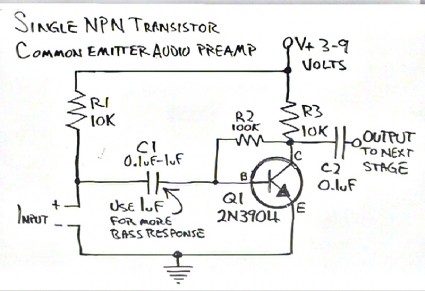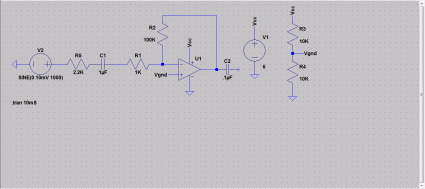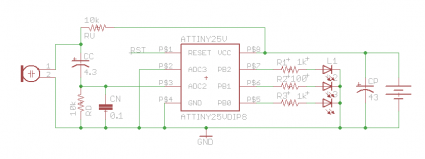Success! I managed to record the pass of ARISSAT-1 from my front yard this morning.
I woke up around 7:00AM, and tried quickly to get ready. I pulled on some clothes, then I dug out my handy Arrow antenna (a hand held dual band Yagi antenna for 2m and 70cm) and my tiny Yaesu VX-3 that I had remembered to charge, a patch cable, my MacBook, and headed to the front yard. Yikes! The sprinklers were on. I turned them off, then dug a camping chair out of the back of my SUV so I had a dry place to sit. I also got a tripod with my little Kodak HD video recorder mounted on it, and aimed it roughly at the chair, thinking I’d shoot some video.
Here’s the prediction that my home grown library did for the pass:
RADIOSCAF-B will be visible from grid CM87ux starting in 00:13:35 at 14:28:04
14:28:04 +0.1° 312.2° ? 49.1°N 144.6°W AOS 381.52
14:29:00 +3.9° 313.7° ? 47.8°N 139.7°W 382.01
14:30:00 +9.2° 316.1° ? 46.1°N 134.7°W 382.55
14:31:00 +17.0° 320.3° ? 44.3°N 130.1°W 383.11
14:32:00 +30.9° 330.2° ? 42.3°N 125.8°W 383.68
14:33:00 +55.2° 10.5° ? 40.0°N 121.7°W 384.27
14:33:14 +58.2° 32.9° ? 39.5°N 120.9°W MAX 384.41
14:34:00 +43.6° 90.6° ? 37.7°N 118.0°W 384.86
14:35:00 +23.4° 110.2° ? 35.2°N 114.5°W 385.46
14:36:00 +13.0° 116.6° ? 32.6°N 111.2°W 386.07
14:37:00 +6.5° 119.8° ? 29.9°N 108.2°W 386.67
14:38:00 +1.9° 121.7° ? 27.2°N 105.3°W 387.27
14:38:28 +0.1° 122.3° ? 25.9°N 104.0°W LOS 387.55
The satellite was supposed to start to the north, then pass to the east, reaching maximum altitude at about 14:33. I figured I wouldn’t be able to hear the satellite at all until it was above 20 degrees or so, maybe at 14:31UTC, because I have a rather high horizon to the north. But at 14:29 I tentatively turned on my radio, tuned to 145.950 and aimed it roughly north, and it was clear that there was some signal coming in. I started Audacity recording. After a minute or so, the signal was very strong, full quieting between deep fades that seemed to occur at around six second intervals.
Here’s the .mp3 file. It’s fine for listening to, and may (or may not) be adequate for SSTV decoding. If you really want to try SSTV, mail me a request and I’ll try to arrange a way to get you the 33M uncompressed audio file. I beeped out the “secret word” that appears in the recording, so as not to spoil it for others.
ARISSAT-1 Recording, Aug 5, 2011, 14:30UTC, 3.3M MP3 File
After I was done, I fired up MMSSTV on my windows box and did some SSTV decodes, here are the images as they appeared in the recording.
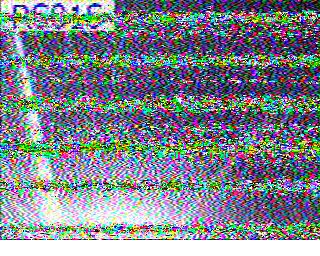

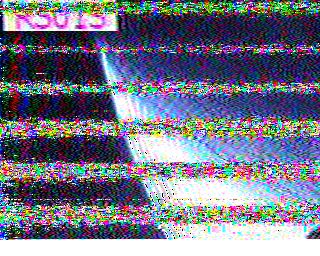
Not too bad. It’s pretty clear from the recording and from the pictures that the satellite is tumbling: periodic deep fades appear to happen about every six seconds or so. Still, the imagery is a pretty neat bonus. As the satellite’s spin slows, we should be able to easily get good SSTV imagery, even with equipment as primitive as mine.
According to the ARISSAT-1 website, the satellite was 20 seconds ahead of the ISS, and maybe a kilometer lower. It’s projected lifetime is short: maybe just sixty days, so don’t delay. Tune it in, collect your certificates, and have some fun.
